Something that often gets me into trouble when I’m photographing: I believe very much in the idea that luck plays a huge part in making good images. I actually wouldn’t want it any other way. True, I want control over my images (otherwise I wouldn’t be spending two extra years in school learning all about it), but I like surprising myself when I go back and look through a take. This mostly applies to content and composition decisions, and not so much the technical side of things (this I would prefer to manage closely), but it’s also fun to play around with different apertures and shutter speeds (and flash ratios…) and see what works best. The benefit of this approach is it’s all the more satisfying–well, in my experience. I can’t speak for everyone–when you do get it just right. The cost is it’s not the most practical way to work, and it doesn’t guarantee you a good image.
I suspect this general attitude towards photography is why I was so overwhelmed in the studio at first (what? I have a say in EVERYTHING? nothing’s left to chance? nothing at all? oh geez…). It’s probably also why, of all the different photo subjects out there, I like shooting sports best. People/objects are always moving around, which means instant variability that must be accounted for. Yay!
Tonight I went with Mito (Calin and Lesley, our other group members, were also there) to work on the Multiple Flash assignment and to get some images for our final project. The Columbia Bike Polo team (its members will be familiar faces with everybody in Advanced by the end of the semester, given how much our group has already made pictures of them) holds its evening practices up on the roof of the Hitt Street parking garage; thanks to the wonders of Daylight Savings Time, we were photographing in about three different light situations as the sun started to go down, twilight set in, and evening finall fell. It was ridiculous trying to use multiple flash while the sun was still bright, since the flash Mito was holding just wouldn’t respond to the one on my camera; it thought that the light from the sun was just fine for photo-taking. This was not helped by the on-camera flash being Canon, and the others being Nikon.
We thought things would get easier once it got dark, but were still getting mostly single-flash images, as the Nikon was still refusing to go off. Calin finally solved the problem by switching the trigger settings to Auto (instead of Manual), and after that we were pretty golden with the multiple light sources. It took some messing around to get the lighting ratio just right (we ended up using 4:1), especially since, during the whole flash-not-going-off deal, I was using a much more powerful beam from the on-camera flash than I should have had to.
Also, a HUGE thank-you goes to Mito for being a human flash-stand all night!
Here are some of the 400+ images- there are quite a few that I can probably fix in Photoshop later on, but for now, these are the ones that were okay as is:
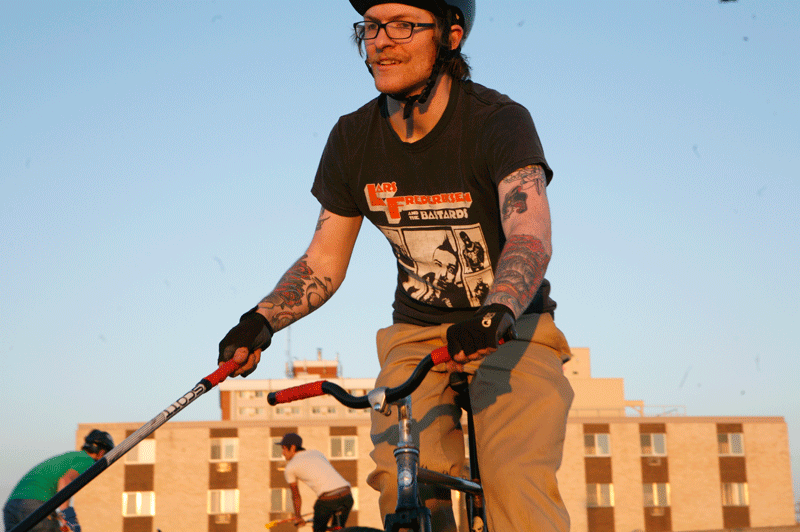
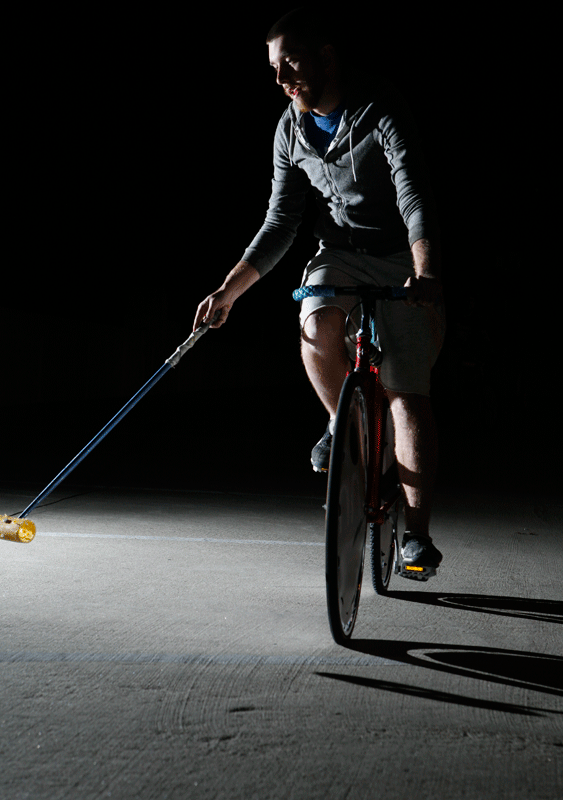
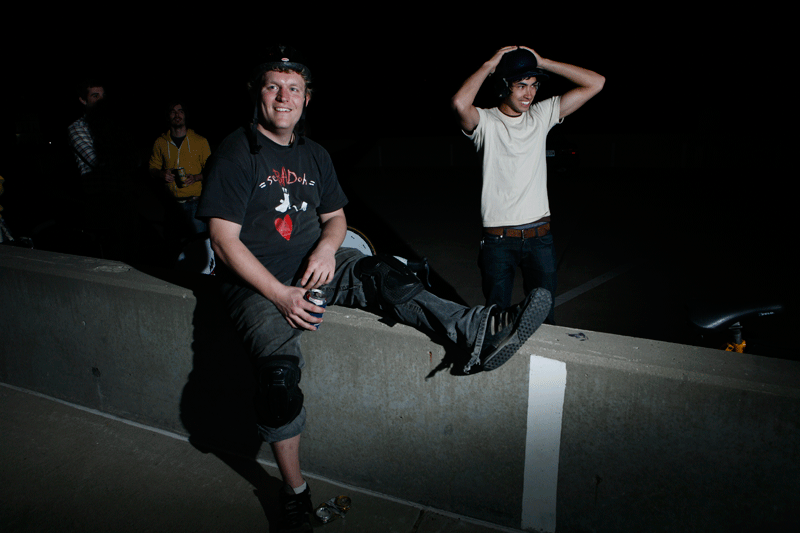

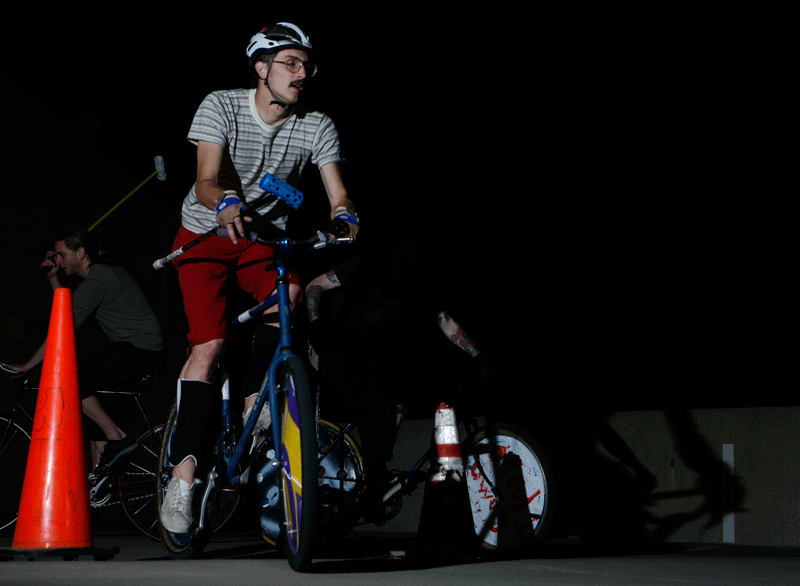
I think I’m turning this one in as a select:
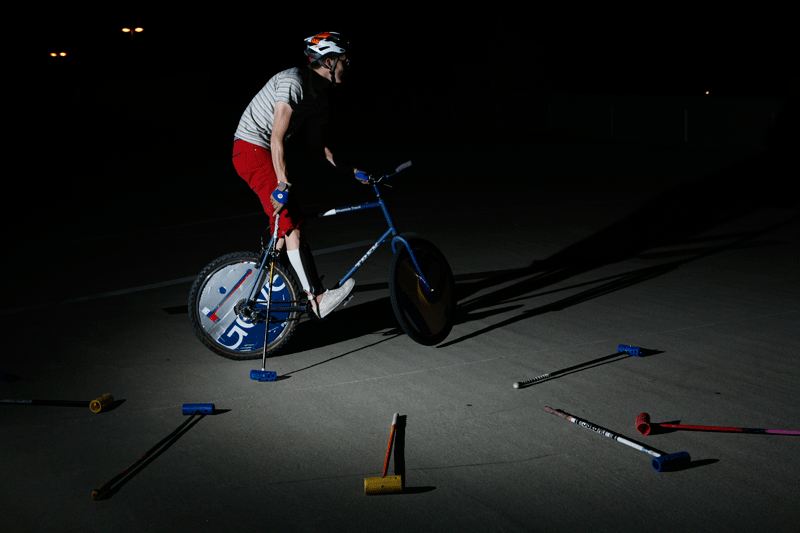
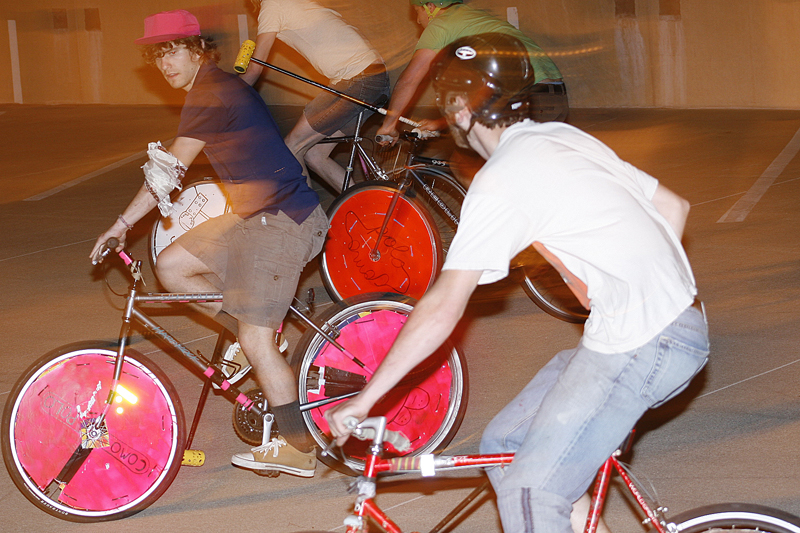
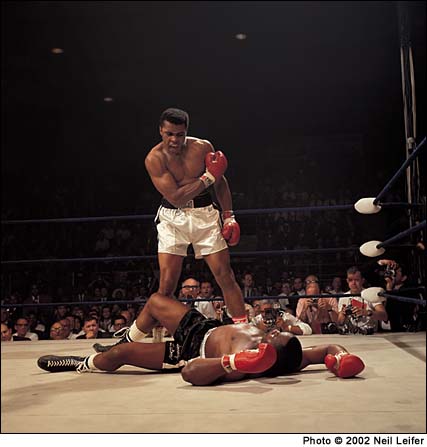
 John Rooney/AP
John Rooney/AP

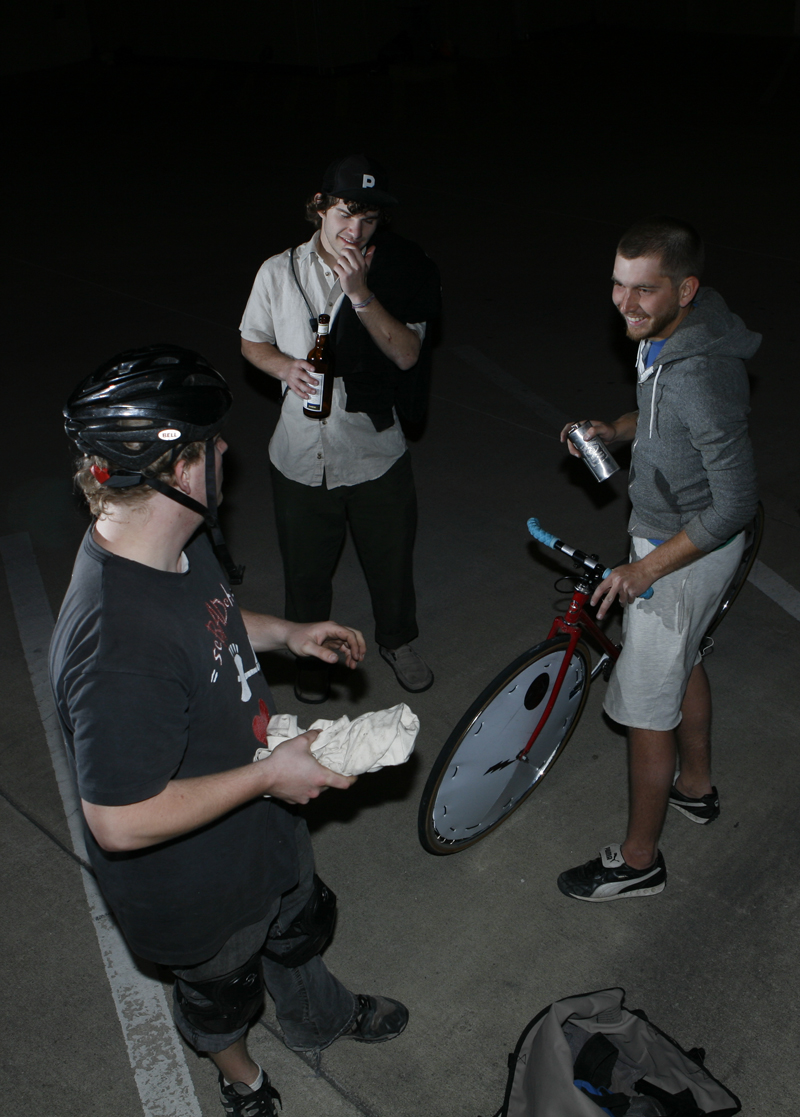 Columbia Bike Polo team members Nicholas Charles Jacob (right) and Pete Abram (center) assist new teammate Ryan Heath (left) after Heath crashed his bike during a game on April 15. The team practices on the roof of the Hitt Street Parking Garage.
Columbia Bike Polo team members Nicholas Charles Jacob (right) and Pete Abram (center) assist new teammate Ryan Heath (left) after Heath crashed his bike during a game on April 15. The team practices on the roof of the Hitt Street Parking Garage.





